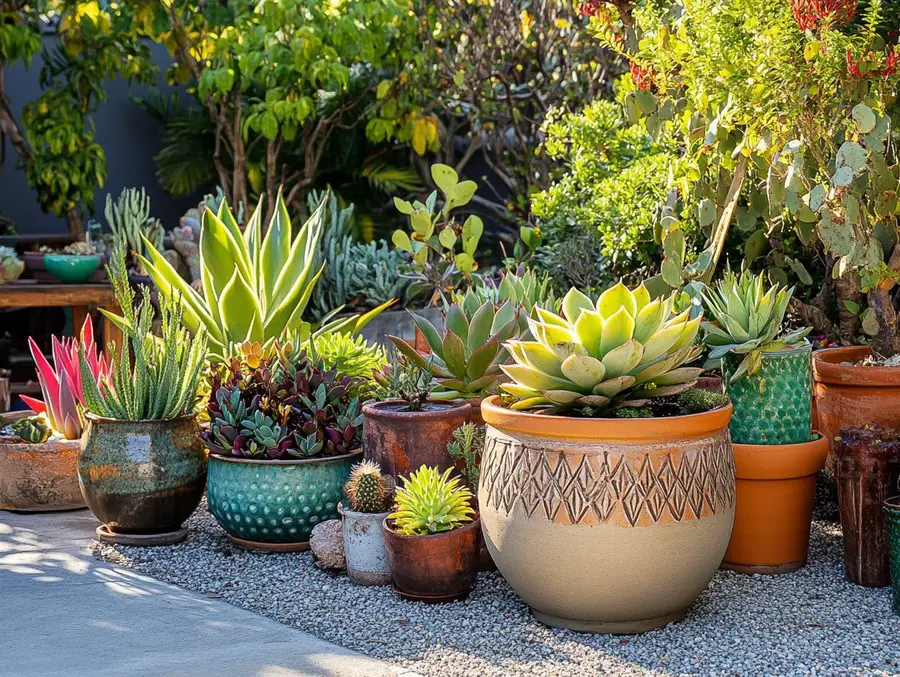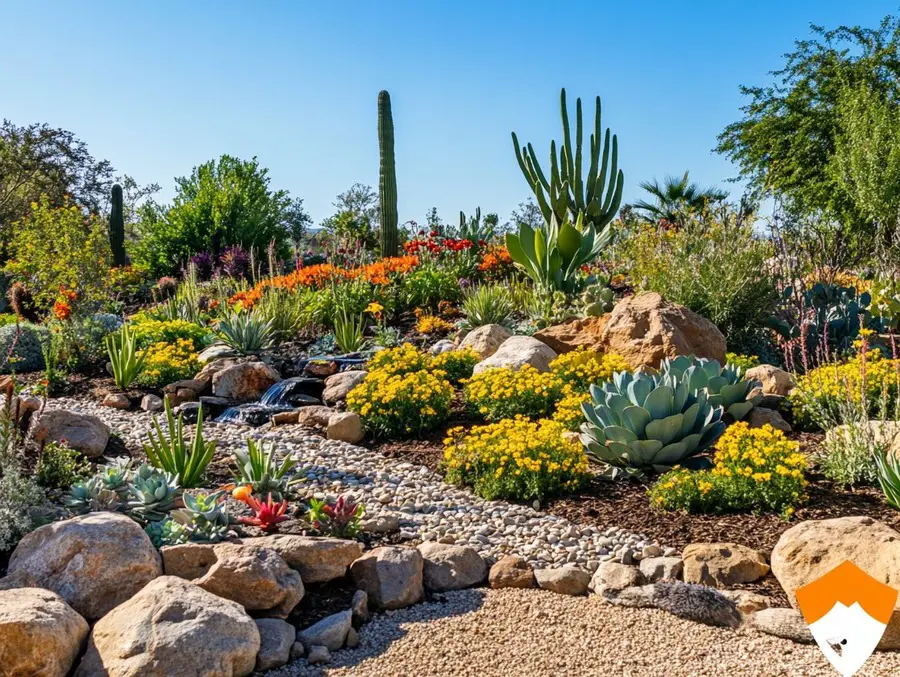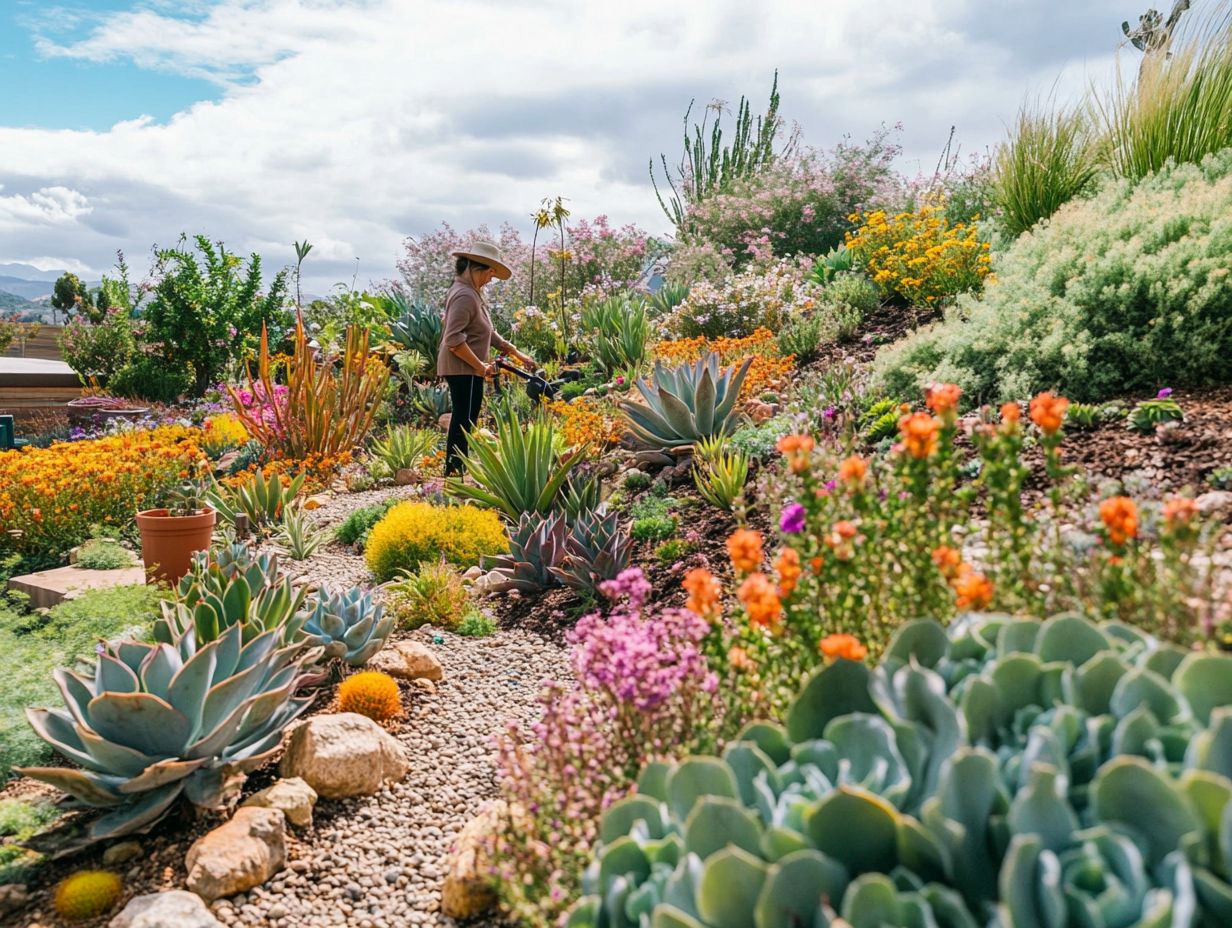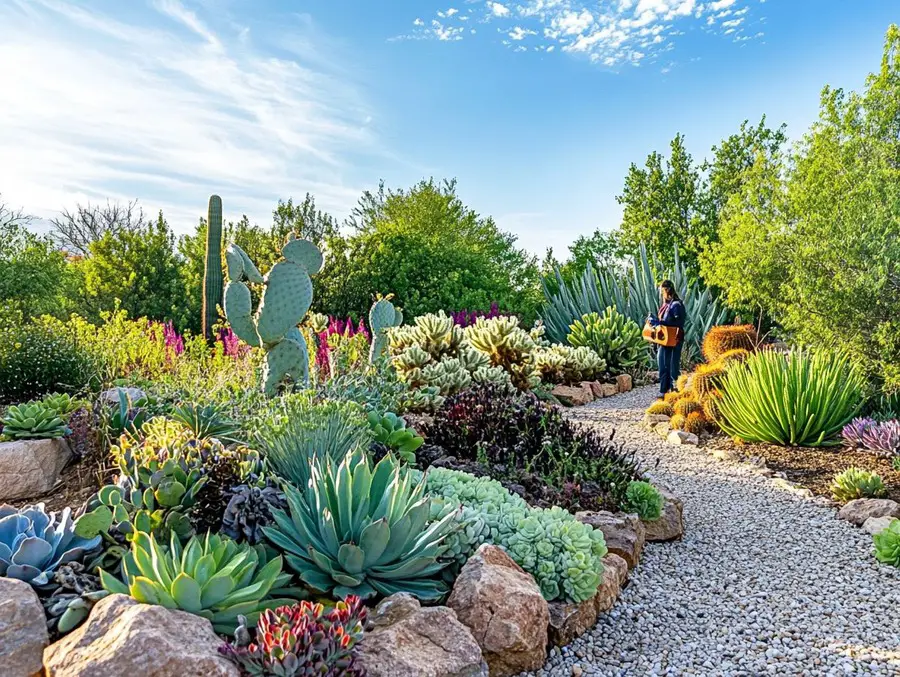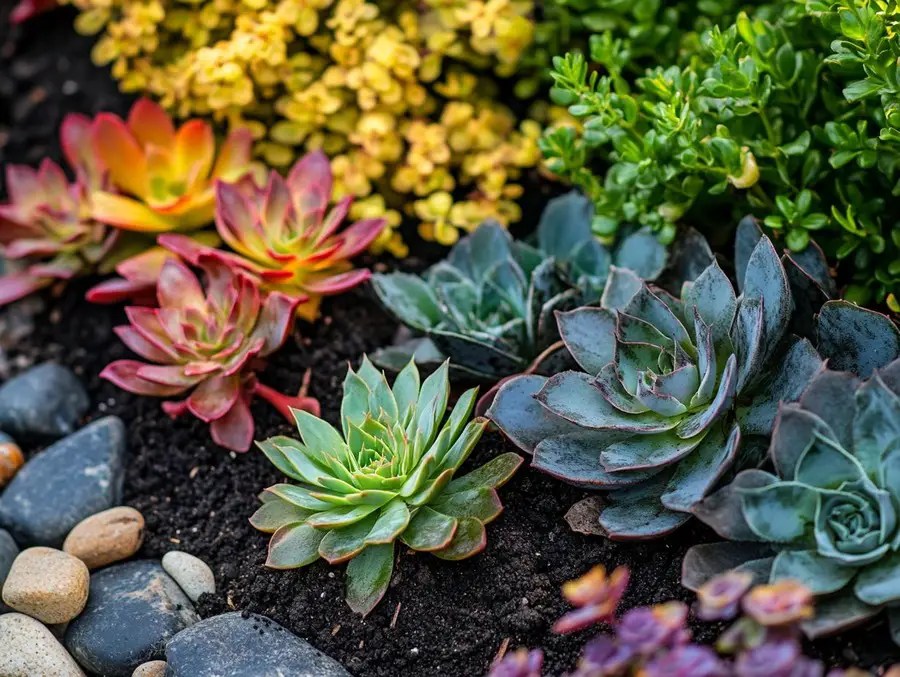We use affiliate links. If you purchase something using one of these links, we may receive compensation or commission.
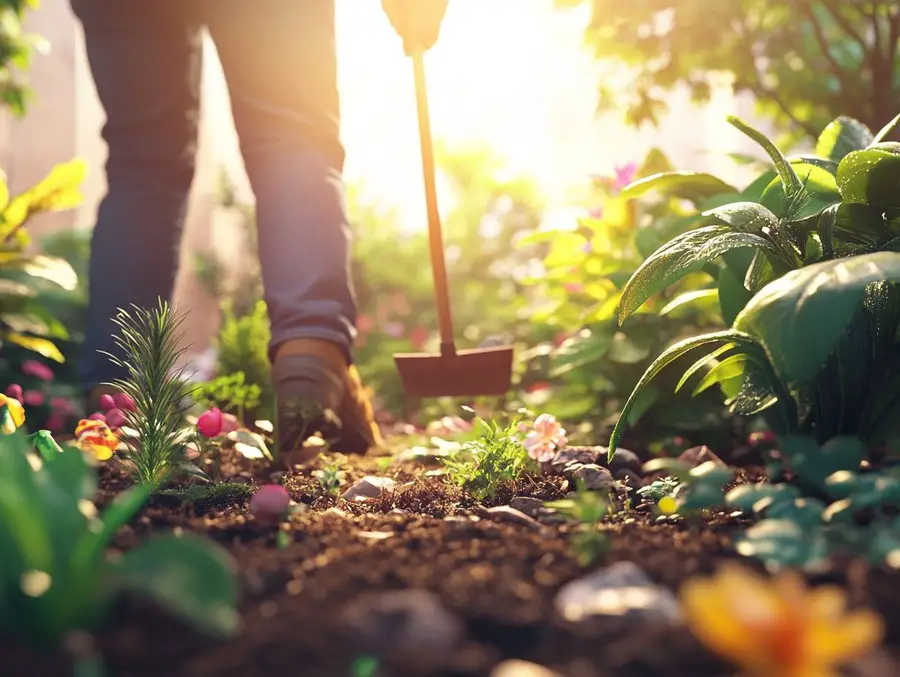
Weed Prevention Without Chemicals is easier than you think, and it can save your garden from being overrun by unwanted plants.
Weeds steal nutrients, crowd out your favorite flowers and veggies, and make garden upkeep a hassle.
But with natural strategies like mulching, cover crops, and smart plant spacing, you can keep weeds in check while keeping your soil healthy and thriving.
Weed Prevention Without Chemicals
Key Takeaways
- Weed Prevention Without Chemicals involves using natural strategies like mulching, hand-pulling, and cover crops to suppress weeds.
- Ground covers, dense plant spacing and organic barriers help block weed growth without harming the environment.
- These eco-friendly methods maintain soil health, conserve water, and reduce maintenance while keeping your garden weed-free.
Weed Prevention Without Chemicals: Easy & Effective Tips
Weeds can be your garden’s worst nightmare, creeping in and taking over those beautiful plants you’ve worked so hard to grow.
They can steal essential nutrients and leave your garden looking a bit sad.
Getting a good grasp on weed prevention is crucial if you want to maintain a thriving garden.
In this article, you’ll explore different methods of weed control, comparing chemical options with natural alternatives.
You’ll find some effective strategies for creating and keeping your outdoor space weed-free.
From designing low-maintenance gardens to implementing long-term practices, you’ll discover how to keep your outdoor areas lush and inviting without having to rely on harmful chemicals.
The Importance of Weed Prevention
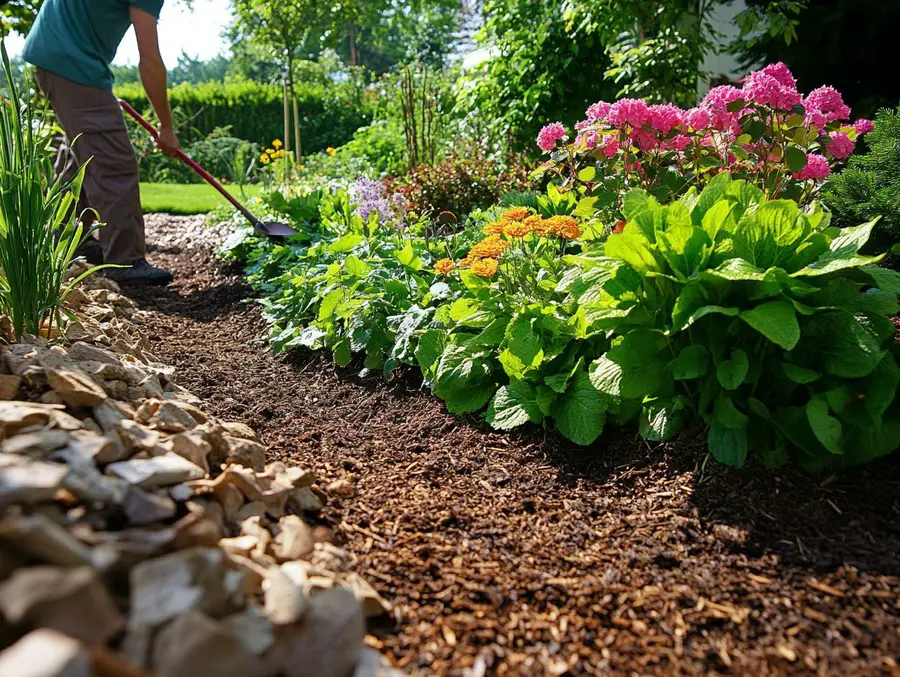
Weed prevention is super important for keeping your garden healthy because it directly affects soil health, plant diversity, and overall productivity.
When you understand the significance of managing weeds, you can create a thriving ecosystem that attracts beneficial insects and cuts down on the need for chemical solutions.
Using effective weed suppression techniques makes your garden look great and supports sustainable gardening practices.
By embracing organic gardening principles and using eco-friendly solutions like mulch and cover crops, you can really enhance your garden maintenance routine while saving resources.
Let’s dive into why keeping those pesky weeds at bay is key to your garden’s success.
Why Preventing Weeds is Important for Your Garden
Preventing weeds is super important for your garden because it helps foster biodiversity, boosts plant health, and keeps pest issues at bay.
When you keep those pesky weeds under control, your desired plants can compete better for sunlight, nutrients, and moisture, which leads to healthier growth.
Managing weeds strengthens your main plants and also reduces the chances of pest infestations sneaking in.
Interestingly, while you might view weeds as nothing more than a nuisance, they can actually help with pest control by attracting beneficial insects.
By promoting a balanced ecosystem, a well-tended garden encourages pollinators and natural predators, creating a resilient environment that nurtures both plants and animals.
Chemical vs. Natural Weed Prevention
When you’re tackling weed prevention, deciding between chemical and natural solutions can be a big deal for the health of your garden and the environment.
Sure, chemical options might give you quick results, but they often come with long-term side effects that can mess with soil health and biodiversity.
On the flip side, natural weed control methods focus on sustainable gardening practices, using things like organic herbicides, permaculture principles, and eco-friendly solutions.
It’s really important for you to weigh the pros and cons of each approach so you can make an informed choice that matches your gardening values.
Pros and Cons of Chemical Weed Prevention
Chemical weed prevention methods come with their own set of pros and cons that you should consider before diving in.
On one hand, these solutions often deliver quick results and are pretty effective at controlling those pesky unwanted plants.
This means you can see an immediate improvement in your garden’s aesthetics and productivity, which is always a plus.
You might also appreciate the convenience that chemical applications provide, giving you more time to focus on other important gardening tasks.
However, it’s essential to keep an eye on the potential downsides these products might bring.
The environmental impact of chemical solutions can be significant, sometimes leading to soil degradation, water pollution, and even harming the beneficial organisms in your garden ecosystem.
Using chemical weed control can also damage or kill the plants you want to keep if herbicides are not carefully applied.
So, it’s crucial to evaluate the long-term effects of these methods on soil health and the overall environment to make informed choices for your gardening journey.
Natural Alternatives for Weed Prevention
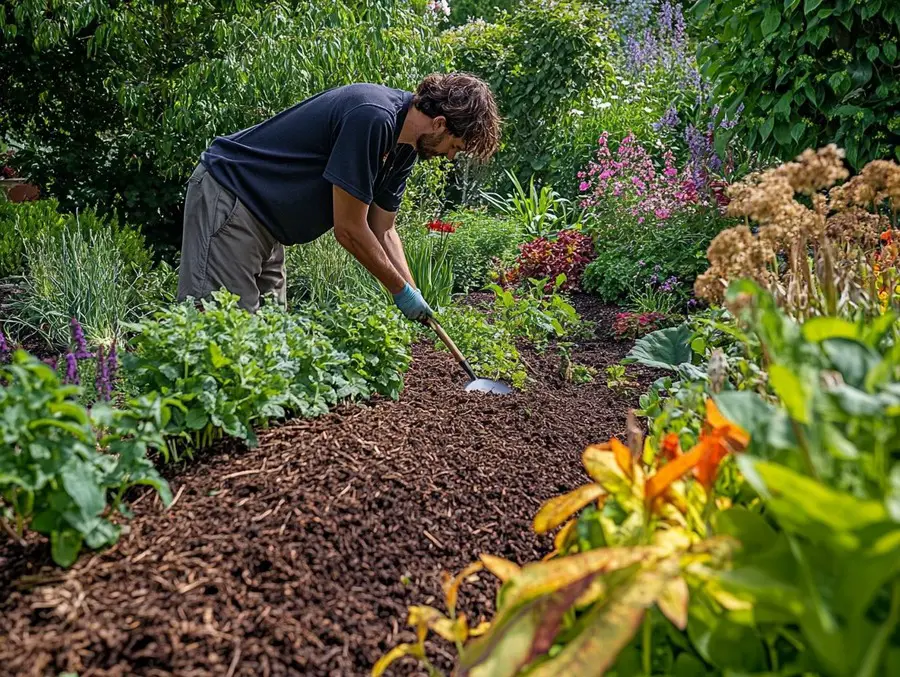
Natural alternatives for weed prevention can offer you a world of benefits, boosting your organic gardening game while keeping those helpful insects in your garden happy and healthy.
These methods tackle unwanted plant growth and enrich your soil, creating a vibrant ecosystem.
For instance, using mulching can seriously cut down on weed growth by blocking sunlight and retaining moisture, which your plants absolutely need.
Engaging in crop rotation encourages a mix of planting cycles, which helps disrupt pesky pests and disease patterns.
And then there’s companion planting, where you pair up compatible plants to keep those pests at bay from your precious greens.
By embracing these techniques, you can enhance your soil health and promote biodiversity, crafting a balanced and sustainable environment that benefits all the living things in your garden.
Preventing Weeds in Your Garden
To keep weeds at bay in your garden, you need to use some effective strategies and techniques.
Focus on enhancing the health of your soil and promoting plant competition, all while minimizing those pesky weed growth patterns.
Effective Strategies and Techniques
Some effective strategies for preventing weeds include using organic amendments and getting to know the weed lifecycle so you can target those seasonal weeds just right.
By integrating methods like hand weeding, solarization, and flame weeding, you can really cut down on weed competition for resources.
Hand weeding is great because it lets you gently remove those unwanted plants while keeping the surrounding soil undisturbed, helping to preserve moisture and nutrients.
Then there’s solarization, which involves covering the soil with clear plastic during the warmer months.
This clever trick uses the sun’s heat to zap weed seeds and boost healthy microbial activity, enhancing nutrient cycling in the process.
If you’re feeling a bit more aggressive, flame weeding is an option too.
It uses high temperatures to take out weeds without messing with the soil structure, which can help keep moisture levels just right.
Putting all these techniques together can really support the health of your garden ecosystem and help you manage various weed types throughout their growth cycles.
Creating a Weed-Free Landscape
Creating a weed-free landscape means you need to put some thought into your garden design.
Consider using native and drought-resistant plants to make your life easier while promoting low-maintenance gardening practices.
Designing for Low-Maintenance and Low-Weed Gardens
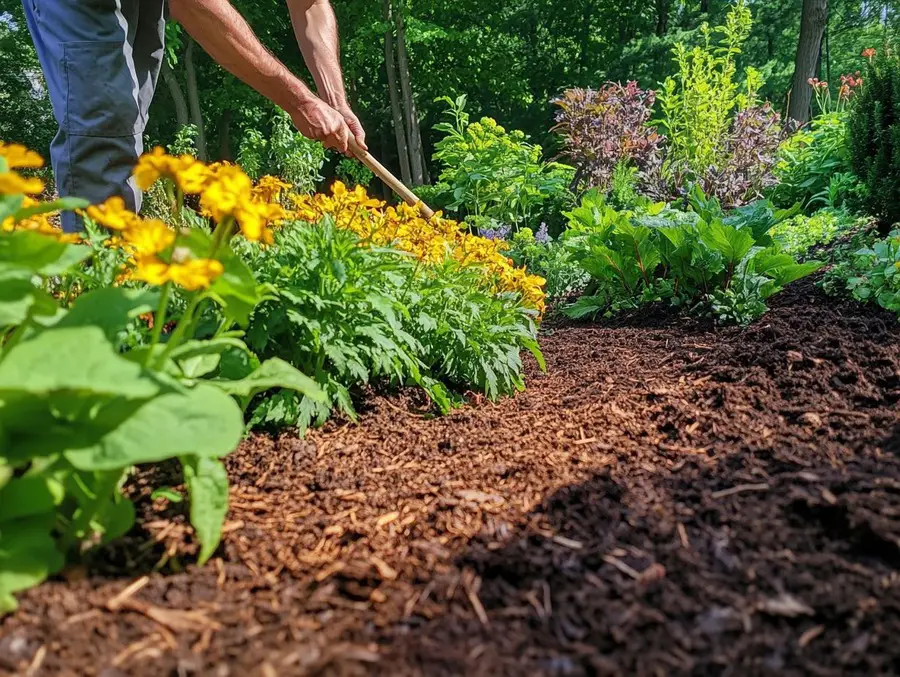 Designing low-maintenance and low-weed gardens can really cut down on the effort you need to put into maintenance while also helping conserve resources.
Designing low-maintenance and low-weed gardens can really cut down on the effort you need to put into maintenance while also helping conserve resources.
By using smart design strategies like incorporating ground cover plants, mulching certain areas, and carefully picking native species, you can create a thriving ecosystem that thrives with minimal fuss.
Ground cover plants form a dense layer that keeps those pesky weeds at bay and enriches the soil, which means you won’t have to rely on chemical weed control.
Mulching is a double win: it retains moisture and adds organic matter as it breaks down, boosting soil health.
And let’s not forget about native species.
They’re perfectly adapted to local conditions, which means they need less water and fertilizer.
This leads to a self-sustaining garden that’s not just good for you, but also great for the environment.
Maintaining a Weed-Free Garden
Keeping your garden free of weeds means sticking to some best practices that embrace sustainable gardening principles and promote a holistic approach to garden care.
Best Practices for Long-Term Weed Prevention
Implementing best practices for long-term weed prevention is crucial for your success in organic farming.
It all starts with proper weed identification and cultural practices.
By adopting strategies like crop rotation, you can disrupt the life cycles of different weeds, making it tougher for them to set up shop in your fields.
Using cover crops boosts your soil health and also goes head-to-head with weeds for nutrients and sunlight.
Regularly checking in on your weed populations lets you spot any troublesome species early, so you can tweak your management practices as needed.
When you combine these approaches, you’re building a sustainable system that lessens your reliance on chemical interventions, ultimately leading to effective weed management over time.
Frequently Asked Questions
What is weed prevention without chemicals?
Weed prevention without chemicals refers to methods of preventing the growth and spread of weeds without the use of synthetic or harmful chemicals.
This approach is more environmentally friendly and sustainable compared to traditional weed control methods.
Why should I use weed prevention without chemicals?
Using weed prevention without chemicals can help protect the environment and your health.
Chemical herbicides can be harmful to animals, insects, and humans, and can also contaminate soil and water sources.
What are some examples of weed prevention without chemicals?
Some examples of weed prevention without chemicals include mulching, hand pulling, using natural weed barriers, and promoting plant diversity in your yard or garden.
These methods work to prevent weeds from growing and spreading without the use of chemicals.
Is weed prevention without chemicals effective?
Yes, weed prevention without chemicals can be just as effective as traditional chemical methods.
It may require more effort and diligence, but it can result in a healthier and more sustainable environment.
Are there any downsides to using weed prevention without chemicals?
The main downside to using weed prevention without chemicals is that it may require more time and effort.
Some methods, such as hand pulling, can be labor-intensive and may need to be repeated regularly to prevent weed growth.
How can I get started with weed prevention without chemicals?
To get started with weed prevention without chemicals, first assess your yard or garden for any existing weeds.
Then, research and implement different methods such as mulching, hand pulling, or using natural weed barriers to prevent future weed growth.
It may also be helpful to consult with a professional or join a community gardening group for tips and support.
Best Plants for Xeriscape Gardens: Hardy & Beautiful
Xeriscape Garden Styles: Easy Low-Maintenance Options
Xeriscape Gardening Techniques: Easy Low-Water Tips
Xeriscape Garden Design & Layout: Easy Water-Wise Beauty
What is xeriscaping? A beginner’s guide to drought-tolerant landscaping – Colorado State University
Related Content
Visit my Amazon Influencer Page for videos and gardening products Grow Your Own Garden

